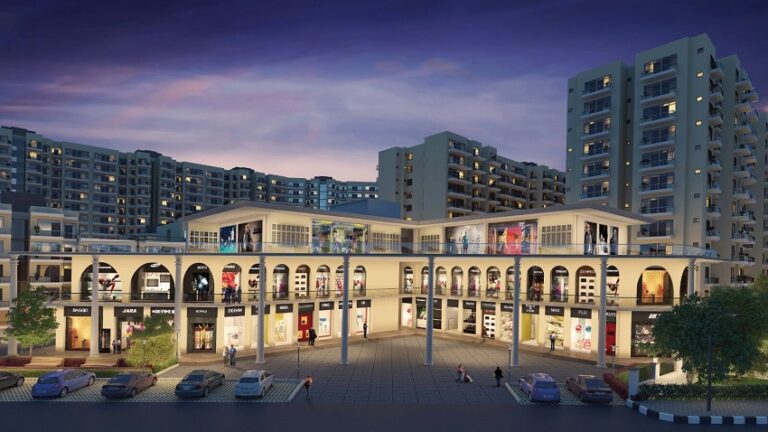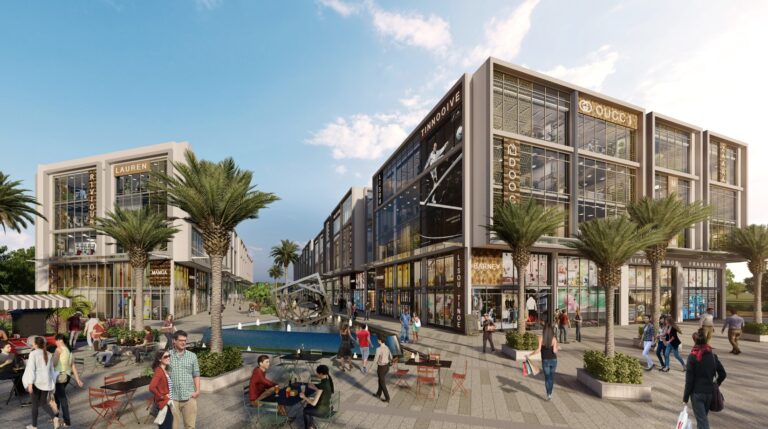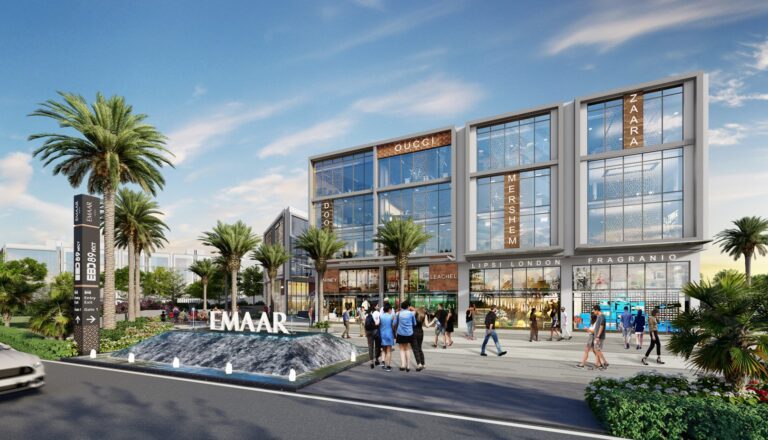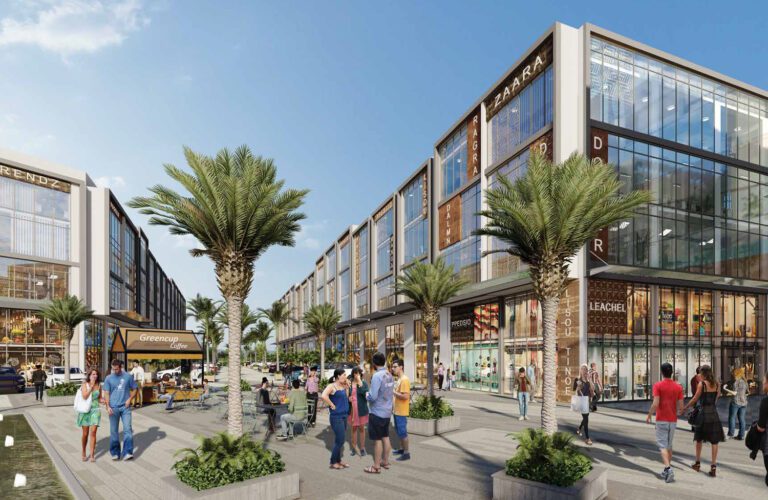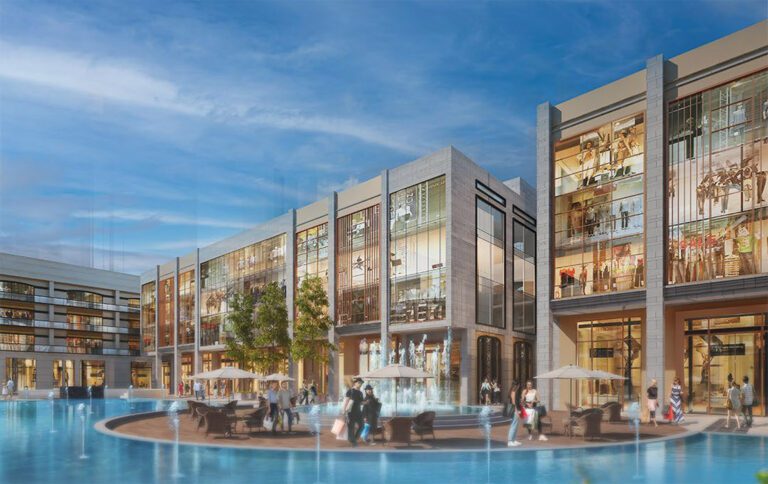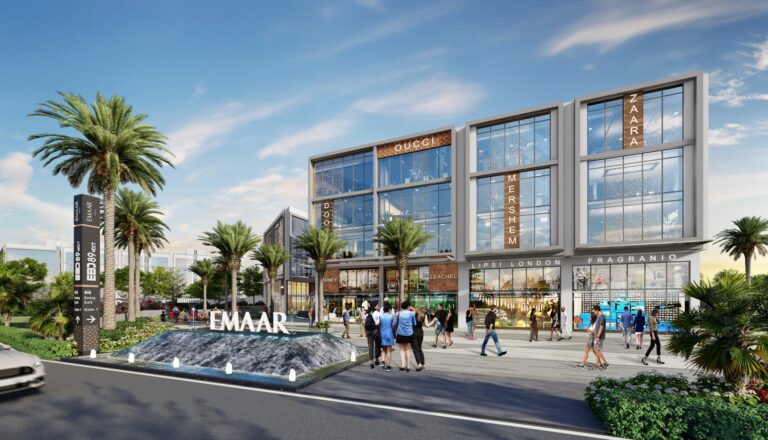SCO vs Retail Spaces | Investment Comparison Guide
Introduction: The Commercial Real Estate Evolution
Gurgaon’s commercial real estate market is at a crossroads. Business owners, entrepreneurs, and investors face a critical decision: invest in traditional retail spaces within established malls or commercial complexes, or explore the emerging opportunity of SCO plots (Shop-Cum-Office plots). This comprehensive guide breaks down the fundamental differences between these two investment formats, providing the financial analysis, comparative data, and strategic insights you need to make an informed decision.
SCO plots represent a paradigm shift in commercial property investment, combining freehold ownership with dual-use flexibility. Retail spaces, whether in malls, office towers, or standalone locations, offer established infrastructure and guaranteed footfall. Both have distinct advantages—the key is understanding which aligns with your financial goals, business model, and investment timeline.
Explore premium SCO projects in Gurgaon to see real-world examples of this investment opportunity in action.
What Are SCO Plots? Understanding the Freehold Commercial Property
SCO (Shop-Cum-Office) is a commercial property format designed to accommodate both retail operations and office functions within a single freehold structure. Unlike leasehold commercial spaces, SCO plots grant 100% ownership of both land and building, with construction rights typically extending to Basement + Ground + 4 floors + Terrace.
Key Characteristics:
- Freehold ownership (perpetual)
- Dual-use functionality (retail ground floor + office upper floors)
- Customizable design (G+4 structure)
- Multiple tenant accommodation capability
- Independent utility management
- No common area maintenance (CAM) charges
What Are Retail Spaces? Understanding Traditional Commercial Property
Retail spaces typically refer to commercial units in established malls, office complexes, or commercial towers. These are usually leasehold properties with fixed design, single-use restrictions (typically retail-only), and shared building management.
Key Characteristics:
- Leasehold or strata ownership (time-bound)
- Single-use functionality (retail focus)
- Pre-designed, fixed layout
- Shared building management
- Common area maintenance charges (15-20% of rent)
- Established footfall and infrastructure
Critical Differences: SCO Plots vs. Retail Spaces
1. Ownership Model: Freehold vs. Leasehold
| Factor | SCO Plots | Retail Spaces |
|---|---|---|
| Ownership Type | 100% Freehold | Leasehold/Strata (Time-bound) |
| Duration | Perpetual (Forever) | 3-30 years (requires renewal) |
| Renewal Costs | None | 10-25% of property value |
| Hereditary Rights | Complete (generations) | Complex after expiration |
| Control | Complete authority | Managed by developer/association |
| Transfer Rights | Free and unrestricted | Subject to lease conditions |
Financial Impact: A retail space purchased for ₹1 crore with 20-year lease becomes worth ₹40-50 lakh after 15 years as lease reduces. The same ₹1 crore SCO plot appreciates to ₹1.5-1.8 crore (50-80% appreciation).
2. Customization & Design Flexibility
SCO Plots:
- Complete design authority (G+4 + basement)
- Customize layout for specific business needs
- Modify floor allocations (retail vs. office mix)
- Adapt to business evolution
- Build unique brand identity spaces
- Renovate/upgrade anytime without permission
Retail Spaces:
- Fixed design (no modifications allowed)
- Developer-determined layout
- Single-use restrictions enforced
- Limited renovation possibilities
- No design customization flexibility
- Requires developer approval for any changes
Example Scenario: A retail shop in mall is restricted to 2000 sq.ft. retail space. A SCO plot of same size can be configured as: 3000 sq.ft. retail + 5000 sq.ft. offices + 1500 sq.ft. basement + 2000 sq.ft. parking.
3. Revenue Generation Potential
SCO Plots: Multi-Stream Income
Monthly Income Breakdown (150 sq.yd plot example):
- Ground floor retail: ₹7-8 lakh (8,500 sq.ft @ ₹85/sq.ft)
- First floor office: ₹5-6 lakh (8,000 sq.ft @ ₹70/sq.ft)
- Upper floors (2-4): ₹12-14 lakh (24,000 sq.ft @ ₹60/sq.ft)
- Basement parking: ₹1-1.5 lakh (50 spaces)
- Total: ₹25-30.5 lakh monthly
- Annual: ₹300-366 lakh
Retail Spaces: Single-Stream Income
Monthly Income Breakdown (2000 sq.ft. retail space):
- Retail rental: ₹1.6-2 lakh (2000 sq.ft @ ₹80-100/sq.ft)
- Total: ₹1.6-2 lakh monthly
- Annual: ₹19.2-24 lakh
Rental Yield Comparison:
- SCO Plot yield: 6-9% (₹300-366 lakh annual ÷ ₹6 Cr investment)
- Retail Space yield: 3-4% (₹19.2-24 lakh annual ÷ ₹50-60 lakh investment)
Multiplier Effect: SCO plots generate 12-15x higher annual income than retail spaces of equivalent size.
4. Tenant Mix & Business Suitability
SCO Plots – Tenant Diversity:
- Ground floor: Retail brands, F&B, clinics, salons
- 1st floor: Corporate offices, co-working spaces
- Upper floors: SMEs, service providers, startups, clinics
- Basement: Parking, storage, utilities
- Occupancy rate: 90-95% (diversified demand)
Retail Spaces – Tenant Limitation:
- Retail-only businesses (fashion, electronics, F&B)
- Limited to footfall-dependent sectors
- No office/service business compatibility
- Occupancy rate: 70-85% (dependent on mall footfall)
Vacancy Risk: If single tenant in retail space defaults, 100% income loss. SCO plot with 4-5 tenants has only 20-25% income loss if one tenant defaults.
5. Maintenance & Management Burden
| Aspect | SCO Plots | Retail Spaces |
|---|---|---|
| CAM Charges | Zero or minimal | 15-20% of rental income |
| Building Maintenance | Owner responsibility | Developer manages |
| Monthly CAM Cost | ₹5-10 lakh (self-managed) | ₹4-6 lakh (included in fees) |
| Net Income Impact | Full control over costs | Fixed percentage deduction |
| Flexibility | Can optimize operations | Charges non-negotiable |
Financial Example:
- Retail space: ₹2 lakh monthly rent – 20% CAM (₹40k) = ₹1.6 lakh net
- SCO plot: ₹30 lakh monthly rent – ₹10k CAM (self) = ₹29.99 lakh net
6. Capital Investment & Financing
SCO Plots Investment:
- Total investment: ₹2-6 crore (depending on location)
- Bank financing: 60-70% LTV available
- Down payment: 30-40% (₹60-240 lakh)
- Monthly EMI (₹6 Cr, 15 years @ 10%): ₹42 lakh
Retail Spaces Investment:
- Total investment: ₹40-80 lakh
- Bank financing: 70-80% LTV available
- Down payment: 20-30% (₹8-24 lakh)
- Monthly EMI (₹60 lakh, 10 years @ 10%): ₹6.3 lakh
Break-Even Analysis:
- SCO plot (₹6 Cr): Break-even in 2.2 years
- Retail space (₹60 lakh): Break-even in 3-4 years
7. Location Advantages & Market Positioning
SCO Plots – Strategic Locations:
- Dwarka Expressway: 15 min to IGI Airport, ₹3-4 Cr investment, 12-15% appreciation
- New Gurgaon: Modern infrastructure, ₹2-3.5 Cr investment, 10-12% appreciation
- Golf Course Extension: ₹2-3.5 Cr, 14-16% appreciation potential
Retail Spaces – Mall Locations:
- Prime malls in Sector 48, 49: ₹40-60 lakh investment
- Shopping complexes near residential: ₹30-50 lakh
- High dependency on mall performance and anchor tenants
Location Value: SCO plots appreciate with area development; retail spaces appreciate with mall performance only.
8. Return on Investment (ROI) Comparison
5-Year ROI Analysis
SCO Plot (₹6 Cr, Sector 82A):
- Annual rental income: ₹250 lakh (net)
- 5-year cumulative rental: ₹12.5 Cr
- Capital appreciation (10%): ₹3.2 Cr
- Total 5-year returns: ₹15.7 Cr (162% ROI)
- Annual average: 32.4% ROI
Retail Space (₹60 lakh, mall location):
- Annual rental income: ₹18 lakh (net of CAM)
- 5-year cumulative rental: ₹90 lakh
- Capital appreciation (5%): ₹15 lakh
- Total 5-year returns: ₹1.05 Cr (75% ROI)
- Annual average: 15% ROI
ROI Comparison: SCO plots deliver 2.2x higher returns than retail spaces over 5 years.
9. Lease Terms & Flexibility
SCO Plots:
- No lease restrictions
- Perpetual ownership
- Modify tenant agreements
- Adjust rental rates annually
- Flexibility to sell anytime
Retail Spaces:
- Fixed lease terms (5-9 years typical)
- Lease renewal uncertainty
- Developer approval required for changes
- Rent increases limited by lease
- Resale restricted until lease completion
Long-term Impact: After 15 years, SCO plot is worth 2-2.5x original cost. Retail space lease has only 5 years remaining, reducing value 30-40%.
10. Resale Value & Liquidity
SCO Plots – Strong Appreciation:
- 10-year value: 2.5-3x original (10-12% annually)
- Example: ₹6 Cr → ₹15-18 Cr in 10 years
- High demand from investors and business owners
- Easy to find buyers
- Freehold status attracts premium valuations
Retail Spaces – Moderate Appreciation:
- 10-year value: 1.5-1.8x original (5-7% annually)
- Example: ₹60 lakh → ₹90-108 lakh in 10 years
- Limited buyer pool
- Lease reduction affects resale value significantly
- Market dependent on mall performance
Comprehensive Comparison Table: SCO vs. Retail Spaces
| Parameter | SCO Plots | Retail Spaces | Winner |
|---|---|---|---|
| Ownership | Freehold (perpetual) | Leasehold (time-bound) | SCO |
| Initial Investment | ₹2-6 Cr | ₹40-80 lakh | Retail |
| Monthly Income | ₹25-30 lakh | ₹1.6-2 lakh | SCO |
| Annual Rental Yield | 6-9% | 3-4% | SCO |
| CAM Charges | Zero-minimal | 15-20% of rent | SCO |
| Design Flexibility | Complete | None | SCO |
| Customization | Full rights | Developer-restricted | SCO |
| Tenant Diversity | 4-5 types | Single-use | SCO |
| Occupancy Rate | 90-95% | 70-85% | SCO |
| Vacancy Risk | Low (diversified) | High (single-tenant) | SCO |
| Annual Appreciation | 10-15% | 5-7% | SCO |
| 5-Year ROI | 160-180% | 70-80% | SCO |
| 10-Year Value Multiple | 2.5-3x | 1.5-1.8x | SCO |
| Financing Available | 60-70% LTV | 70-80% LTV | Retail |
| Break-even Period | 2.2 years | 3-4 years | SCO |
| Long-term Wealth | Perpetual | Lease-limited | SCO |
| Resale Liquidity | High | Moderate | SCO |
| Professional Management | Owner-managed | Developer-managed | Retail |
| Established Footfall | Growing | Pre-established | Retail |
| Scalability | Yes (expansion) | Limited | SCO |
| Inflation Hedge | Excellent | Good | SCO |
Practical Decision Framework: Which Should You Choose?
Choose SCO Plots If:
✓ You’re a long-term investor (10+ years holding period)
✓ You want maximum rental income (₹20-30 lakh monthly)
✓ You seek complete ownership and control
✓ You can manage ₹2-6 Cr investment
✓ You want to diversify tenant mix
✓ Future wealth creation is priority
✓ You value design flexibility
✓ You want to avoid CAM charges
Choose Retail Spaces If:
✓ You have limited capital (₹40-80 lakh budget)
✓ You want immediate established footfall
✓ You prefer hands-off, professionally managed property
✓ You need quick setup (ready-to-move)
✓ You have 5-7 year investment horizon
✓ You want lower maintenance burden
✓ You’re a retail business owner needing immediate location
✓ You prefer familiar, established malls/complexes
Wrapping Up
The difference between SCO plots and retail spaces isn’t merely structural—it’s fundamental. SCO plots represent modern commercial real estate evolution, offering perpetual ownership, multi-stream income, and significant appreciation potential. Retail spaces provide established infrastructure and immediate footfall but lack the long-term wealth creation potential.
For Gurgaon investors in 2025, SCO plots along Dwarka Expressway and New Gurgaon represent the superior investment opportunity, delivering 2-3x higher returns while building perpetual wealth. The choice is clear: invest in SCO plots on scospace.in for generational wealth creation, not retail spaces for marginal returns.
Explore our premium SCO projects today and secure your financial future in Gurgaon’s booming commercial real estate market.
FAQs:
Q 1: What is the fundamental difference between SCO plots and retail spaces?
Answer: The fundamental difference lies in ownership structure and usage flexibility:
SCO Plots:
- Freehold ownership (you own land + building forever)
- Dual-use (retail ground floor + office upper floors)
- Customizable (G+4 construction with basement)
- Multiple independent tenants possible
- No external management dependency
- Perpetual appreciation potential
Retail Spaces:
- Leasehold ownership (time-limited rights)
- Single-use (retail only, typically)
- Pre-designed fixed layout
- Single tenant accommodation
- Managed by mall/developer association
- Value depreciates as lease reduces
Practical Impact: With ₹6 crore investment, SCO plot generates ₹25-30 lakh monthly income. Same amount in retail spaces yields ₹1.6-2 lakh monthly—15x less income.
Q 2: Which investment offers better financial returns: SCO or retail spaces?
Answer: 5-Year Financial Comparison:
SCO Plot (₹6 Cr investment):
- Annual net rental: ₹250 lakh
- 5-year rental income: ₹12.5 Cr
- Capital appreciation (10%): ₹3.2 Cr
- Total returns: ₹15.7 Cr
- ROI: 162%
Retail Space (₹60 lakh investment):
- Annual net rental: ₹18 lakh
- 5-year rental income: ₹90 lakh
- Capital appreciation (5%): ₹15 lakh
- Total returns: ₹1.05 Cr
- ROI: 75%
Conclusion: SCO plots deliver 2.2x higher returns on investment over 5 years. Annual rental yield: SCO (6-9%) vs. Retail (3-4%).
Q 3: What are the financing differences between SCO and retail space purchases?
Answer:
| Financing Aspect | SCO Plots | Retail Spaces |
|---|---|---|
| LTV Offered | 60-70% | 70-80% |
| Interest Rate | 9-11% | 9-11% |
| Tenure | 15-20 years | 10-15 years |
| Down Payment | 30-40% | 20-30% |
| Rent Coverage | 50-60% of rent needed | 60-70% of rent needed |
| Bank Willingness | Strong (appreciating asset) | Good (established property) |
Financing Example (₹6 Cr SCO vs. ₹60 lakh Retail):
SCO Plot:
- Down payment: ₹1.8 Cr
- Loan amount: ₹4.2 Cr
- Monthly EMI: ₹42 lakh
- Monthly rental income: ₹25-30 lakh
- Cash shortfall: ₹12-17 lakh (Years 1-5)
Retail Space:
- Down payment: ₹18 lakh
- Loan amount: ₹42 lakh
- Monthly EMI: ₹4.5 lakh
- Monthly rental income: ₹1.6-2 lakh
- Cash shortfall: ₹2.5-2.9 lakh (Years 1-5)
Q 4: How do maintenance and management burdens compare?
Answer: SCO Plots – Owner-Managed:
- Self-manage maintenance (or hire property manager)
- CAM costs: Minimal or self-directed (₹5-10k monthly)
- Full operational control
- Customize maintenance standards
- Building management flexibility
- Insurance and utilities: Direct management
Retail Spaces – Developer-Managed:
- Centralized mall management
- CAM charges: 15-20% of rent (₹2.4-3.6 lakh on ₹12-18 lakh rent)
- Standardized maintenance (cannot customize)
- Shared security/cleaning standards
- Limited control over facility quality
- Insurance/utilities included in CAM
Annual Maintenance Impact:
SCO Plot (₹30 lakh monthly income):
- Maintenance cost: ₹10-15 lakh/year (3-5% of rent)
- Net income: ₹285-290 lakh/year
Retail Space (₹2 lakh monthly income):
- CAM charges: ₹3.6-4.8 lakh/year (18-24% of rent)
- Net income: ₹19.2-23.2 lakh/year
Winner: SCO plots (lower proportional costs, full control)
Q 5: What types of businesses can operate in SCO plots vs. retail spaces?
Answer: SCO Plot Business Suitability:
- Ground floor: Retail brands, F&B, clinics, gyms, salons, beauty studios
- First floor: Corporate offices, co-working spaces, design studios
- Upper floors: SME offices, service centers, startups, educational institutes
- Basement: Parking, storage, utility systems
Tenant Types Possible: 4-5 independent businesses simultaneously
- Occupancy rate: 90-95% (diversified demand)
- Vacancy risk: Low (multiple revenue streams)
- Market adaptability: High (mix-and-match tenant strategy)
Retail Space Business Suitability:
- Retail stores only: Fashion, electronics, grocery, pharmacy
- F&B: Cafes, restaurants
- Services: Salons, gyms
Tenant Types Possible: Single dominant use
- Occupancy rate: 70-85% (footfall-dependent)
- Vacancy risk: High (single revenue stream)
- Market adaptability: Low (locked into retail niche)
Practical Scenario:
- SCO plot vacancy: One floor empty = 75% income maintained
- Retail space vacancy: Tenant defaults = 0% income
Q 6: How does appreciation potential differ between SCO and retail?
Answer: SCO Plot Appreciation Drivers:
- Area infrastructure development (RRTS, highways)
- Commercial density increase
- Demographic growth (high-income populations)
- Corporate expansion activities
- City master plan development
- Expected annual appreciation: 10-15%
- 10-year value multiple: 2.5-3x
Retail Space Appreciation Drivers:
- Mall performance and upgrades
- Anchor tenant strength
- Overall commercial real estate market
- Location becoming more established
- Expected annual appreciation: 5-7%
- 10-year value multiple: 1.5-1.8x
Appreciation Comparison (10-year horizon):
SCO Plot (₹6 Cr today):
- Year 10 value: ₹15-18 Cr (2.5-3x)
- Capital appreciation: ₹9-12 Cr
- Plus cumulative rent: ₹25+ Cr
- Total wealth: ₹34-37 Cr
Retail Space (₹60 lakh today):
- Year 10 value: ₹90-108 lakh (1.5-1.8x)
- Capital appreciation: ₹30-48 lakh
- Plus cumulative rent: ₹1.8+ Cr
- Total wealth: ₹2.1-2.28 Cr
Winner: SCO plots (15-16x wealth creation vs. 3.5-3.8x for retail)
Q 7: What are the ready-to-move possession advantages and disadvantages?
Answer: Ready-to-Move SCO Plots (Available Now):
Advantages:
✓ Immediate rental income generation
✓ No construction delays
✓ Verified occupancy certificates
✓ No risk of project failure
✓ Faster financing approval
Disadvantages:
✗ 5-10% higher pricing (pre-appreciation premium)
✗ Limited customization options (already built)
✗ Existing design may not perfectly fit needs
✗ No appreciation during construction phase
Ready-to-Move Retail Spaces (Established Malls):
Advantages:
✓ Immediate business setup
✓ Established footfall
✓ No construction delays
✓ Professional infrastructure
✓ Brand association benefits
Disadvantages:
✗ Fixed layout constraints
✗ No design flexibility
✗ Higher CAM charges
✗ No ownership of property
✗ Limited appreciation potential
Financial Comparison:
Ready-to-Move SCO:
- Price: ₹6.5 Cr (10% premium over under-construction)
- Immediate annual income: ₹250 lakh
- Break-even: 2.6 years
Pre-Launch SCO:
- Price: ₹5.8 Cr (30% discount)
- 2-year wait for possession
- Annual income from year 3: ₹250 lakh
- Break-even: 2.3 years (despite wait)
Recommendation: Ready-to-move SCO best for immediate cashflow; pre-launch SCO best for appreciation upside.
Q 8: How do lease terms and long-term ownership rights compare?
Answer: SCO Plot Ownership Rights:
- Perpetual ownership (forever)
- No lease renewal required
- Full hereditary rights (pass to descendants indefinitely)
- Can modify/sell anytime
- No developer control post-purchase
- Property appreciates indefinitely
Retail Space Lease Terms:
- Typical lease: 5-9 years (renewable)
- Renewal cost: 10-25% of property value
- Limited hereditary rights (complications after expiration)
- Resale restricted by lease terms
- Developer retains certain rights
- Value depreciates as lease reduces
Long-term Ownership Scenario (25-year horizon):
SCO Plot Owner:
- Still owns property completely at year 25
- No renewal costs paid
- Accumulated wealth: ₹50+ Cr
- Perpetual income stream: ₹250+ lakh annually
Retail Space Buyer:
- Original lease expired (year 9)
- Renewed lease for ₹10-15 Cr renewal fee
- Property value peaked around year 7
- Uncertain long-term viability
- Income stream disrupted during renewal
Q 9: What is the break-even period for each investment type?
Answer: Break-Even Definition: When cumulative rental income + capital appreciation = total investment
SCO Plot Break-Even Analysis:
Scenario 1: Premium Investment – ₹6 Cr, Sector 82A:
- Annual returns (rental + appreciation): ₹250 lakh + ₹60 lakh = ₹310 lakh
- Break-even: 1.9 years
Scenario 2: Growth Investment – ₹3 Cr, Dwarka Expressway:
- Annual returns: ₹130 lakh + ₹36 lakh = ₹166 lakh
- Break-even: 1.8 years
Scenario 3: Value Investment – ₹2 Cr, New Gurgaon:
- Annual returns: ₹70 lakh + ₹28 lakh = ₹98 lakh
- Break-even: 2.0 years
Retail Space Break-Even Analysis:
Scenario 1: Premium Retail (₹60 lakh, prime mall):
- Annual net returns: ₹18 lakh + ₹3 lakh = ₹21 lakh
- Break-even: 2.9 years
Scenario 2: Good Location (₹45 lakh, commercial complex):
- Annual net returns: ₹14 lakh + ₹2.5 lakh = ₹16.5 lakh
- Break-even: 2.7 years
Comparative Timeline:
- SCO plot break-even: 1.8-2.0 years
- Retail space break-even: 2.7-2.9 years
- SCO reaches break-even 40% faster
Q 10: What’s the tenant demand difference and vacancy risk profile?
Answer: SCO Plot Tenant Demand:
High Demand Sectors:
- F&B: Cafes, restaurants (ground floor) = ₹7-10 lakh/month rent
- Retail: Fashion, electronics (ground floor) = ₹8-10 lakh/month
- Corporate offices (upper floors) = ₹5-8 lakh/month
- Co-working spaces (upper floors) = ₹6-9 lakh/month
- Healthcare: Clinics, diagnostic (ground/first) = ₹4-6 lakh/month
- Services: Salons, gyms (ground floor) = ₹3-5 lakh/month
Occupancy Profile:
- Primary tenant demand: Guaranteed (multiple business types)
- Secondary tenant demand: Strong (complementary businesses)
- Average occupancy: 90-95%
- Typical vacancy period: 1-2 months between tenants
- Diversification benefit: Loss of one tenant = only 20% income loss
Retail Space Tenant Demand:
Limited Demand Sectors:
- Retail brands only (footfall-dependent)
- F&B (location-dependent)
- Service businesses (secondary demand)
Occupancy Profile:
- Primary tenant demand: Dependent on mall footfall
- Mall performance critical (anchor tenant strength)
- Average occupancy: 70-85%
- Typical vacancy period: 3-6 months
- Concentration risk: Loss of single tenant = 100% income loss
Comparative Vacancy Scenario:
SCO Plot with 5 Tenants:
- If 1 tenant vacates: ₹6 lakh/month lost = 20% reduction
- Easily replaced within 1 month
- Income remains at 80% during vacancy
Retail Space (Single Tenant):
- If tenant vacates: ₹2 lakh/month lost = 100% reduction
- Takes 3-6 months to find replacement
- Income drops to zero during vacancy
-
Monthly EMI still owed (₹4.5 lakh)

